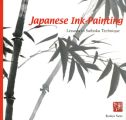 Japanese Ink Painting
Japanese Ink Painting
Автор: Ryukyu Saito
Год издания: 0000
Japanese Ink Painting: Lessons in Suiboku Technique teaches beginners the fundamental techniques of suiboku , a form of Japanese ink painting. Suiboku is considered to be a type of Japanese painting known as sumi-e. It adds water to emphasize the shading of black into gray in one brush-stroke. With origins in China and a spiritual basis in Zen Buddhism, this form of brush painting—expressing nature's colors through shades of black ink monochrome—has been enjoyed throughout the centuries in Japan as a hobby for the amateur. This Japanese painting book offers step-by-step lessons with easy-to-understand explanations through nearly 60 illustrations. The numerous photographs at the end of the book, in addition to the works of great masters in the art of suiboku , include several paintings by the author's pupils to prove what the amateur can achieve through careful observance of instructions and patient practice. As the author points out, this book is designed for the beginner, and "even the amateur can learn by himself and enjoy suiboku as a hobby."
 Car painting without any extra cost, in eBook
Car painting without any extra cost, in eBook
Автор: Монолит
Год издания:
Content
Introduction
To paint or not to paint?
Remove paint or not?
Body work
Equipment for painting at home
Modern products for painting
Preparing, grinding and protection of non-staining body panels
The miracle in one day
"Strip-painted"
Full range of works
Do not stop there
Primary and secondary grinding
 Museum of painting and sculpture. Vol. 3
Museum of painting and sculpture. Vol. 3
Автор: Jean Duchesne
Год издания:
Полный вариант заголовка: «Museum of painting and sculpture : Vol. 3 : or collection of the principal pictures, statues et bas-reliefs in the public and private galleries of Europe / drawn and etched by Reveil ; with descriptive, critical, and historical notices by Duchesne senior».
 Japanese Fairy Tales
Japanese Fairy Tales
Автор: Yei Theodora Ozaki
Год издания:
This is a collection of Japanese fairy tales translated by Yei Theodora Ozaki based on a version written in Japanese by Sadanami Sanjin. According to Ozaki, “These stories are not literal translations, and though the Japanese story and all quaint Japanese expressions have been faithfully preserved, they have been told more with the view to interest young readers of the West than the technical student of folk-lore.” Ozaki freely added to and changed the original stories for color and background.1.0
 Talks on British Painting / Беседы о живописи Великобритании. Практикум
Talks on British Painting / Беседы о живописи Великобритании. Практикум
 At the Fall of Port Arthur: or, A Young American in the Japanese Navy
At the Fall of Port Arthur: or, A Young American in the Japanese Navy



